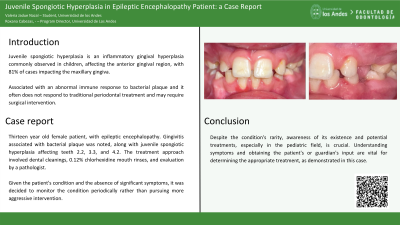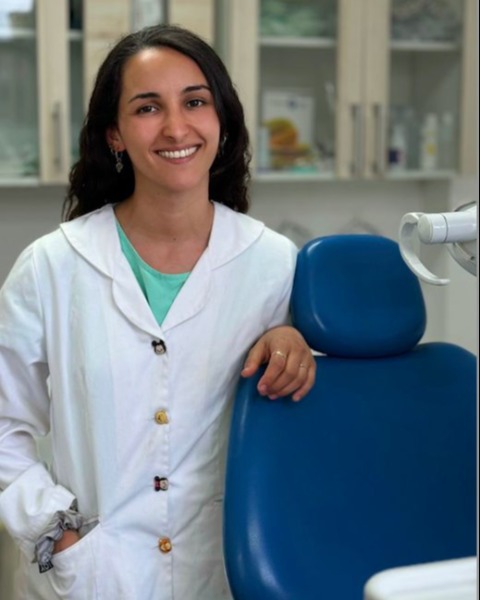Oral Pathology
527 - Juvenile Spongiotic Hyperplasia in Epileptic Encephalopathy Patient: a Case Report


Valeria Jadue Nazal
Student
Universidad de los Andes
Universidad de los Andes
Santiago, Region Metropolitana, Chile- BW
Barbara Weihrauch, .
Universidad de los Andes
- cF
carolina Field, -
Universidad de los Andes
- RC
Roxana Cabezas, -
Program Director
Universidad de Los Andes
Santiago, Region Metropolitana, Chile
Presenting Author(s)
Co-Author(s)
Program Director(s)
Juvenile spongiotic hyperplasia is a form of inflammatory gingival hyperplasia commonly observed in children, with an unknown prevalence. It predominantly affects the anterior gingival region, with 81% of cases impacting the maxillary gingiva and 16% affecting the mandibular gingiva. The exact cause of this condition remains unknown, but it is believed to be associated with an abnormal immune response to bacterial plaque. Juvenile spongiotic hyperplasia often does not respond to traditional periodontal treatment and may require surgical intervention, with a high recurrence rate. This abstract aims to present a clinical case of this condition in a patient with epileptic encephalopathy.
Thirteen year old female patient, frankl 3, undergoing pharmacological treatment for epileptic encephalopathy. First phase of mixed dentition, high cariogenic risk, and no caries activity. Gingivitis associated with bacterial plaque was noted, along with juvenile spongiotic hyperplasia affecting teeth 2.2, 3.3, and 4.2.
The treatment approach involved dental cleanings, 0.12% chlorhexidine mouth rinses, and evaluation by a pathologist. Given the patient's condition and the absence of significant symptoms, it was decided to monitor the condition periodically rather than pursuing more aggressive intervention.
Despite the condition's rarity, awareness of its existence and potential treatments, especially in the pediatric field, is crucial. Understanding symptoms and obtaining the patient's or guardian's input are vital for determining the appropriate treatment, as demonstrated in this case.
Identify Supporting Agency and Grant Number:

.jpg)